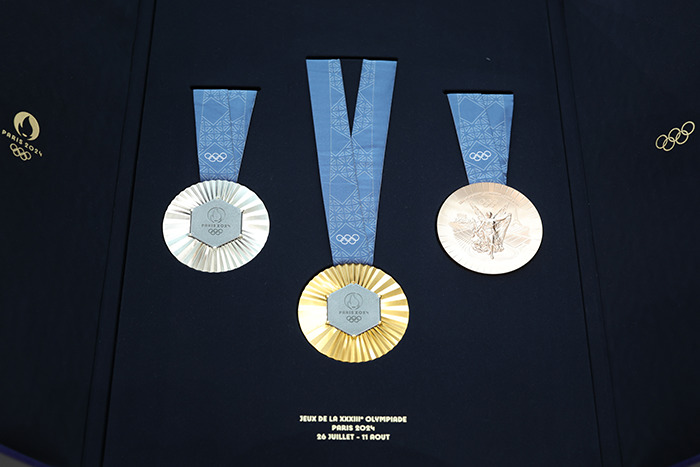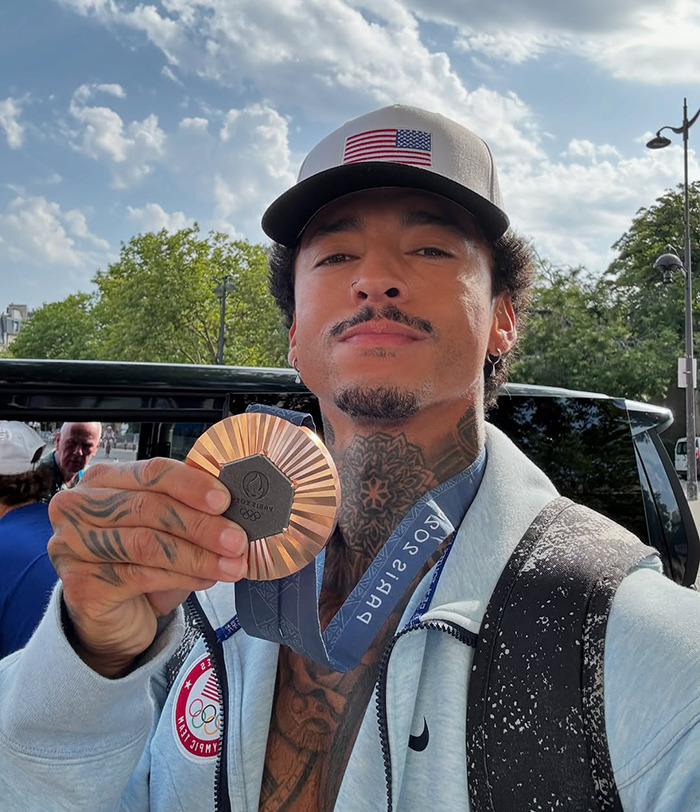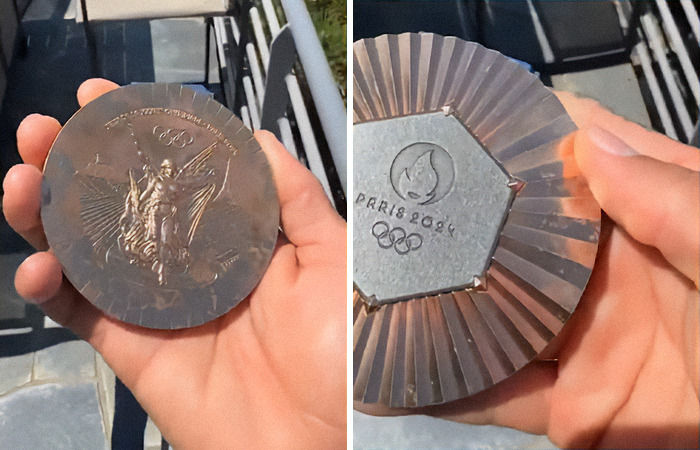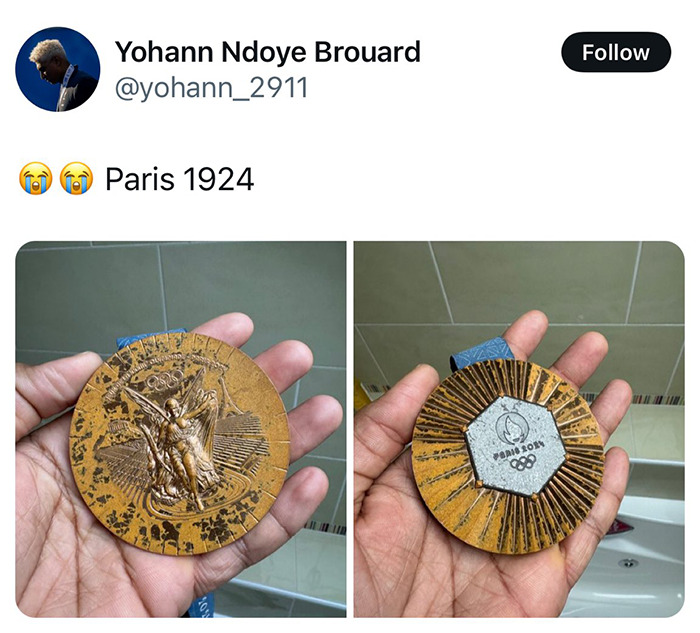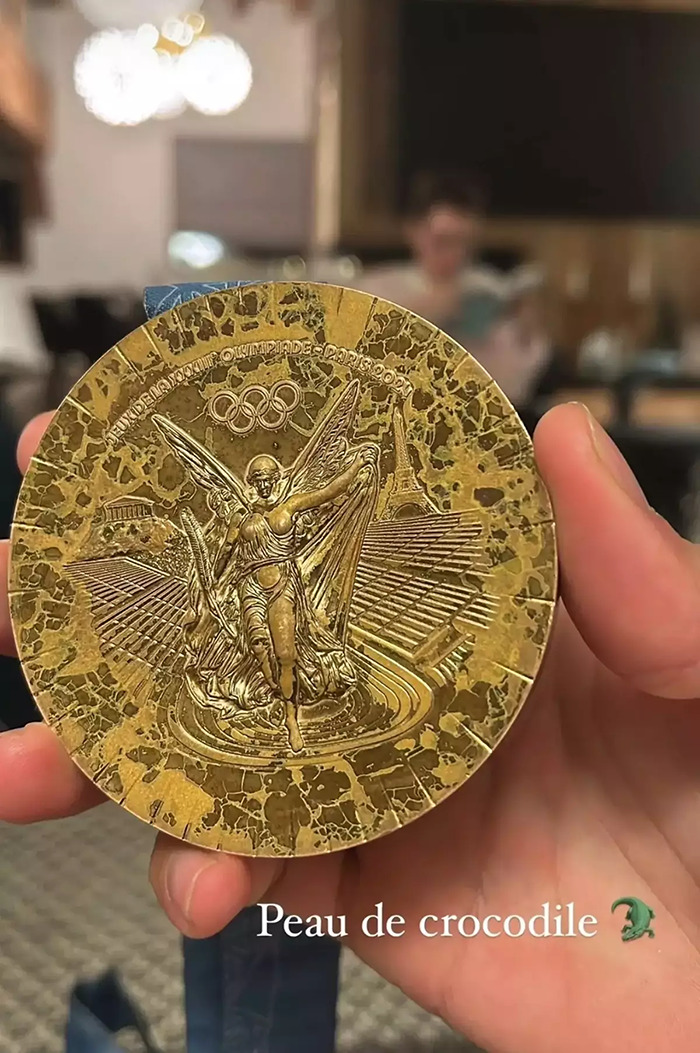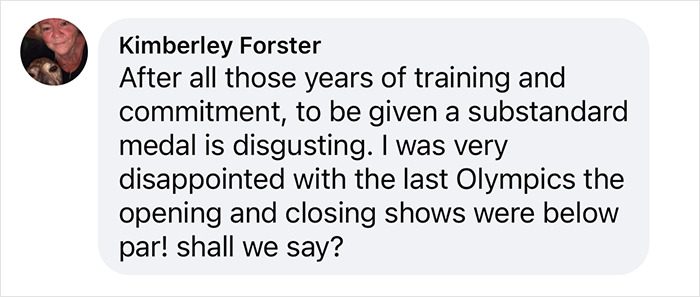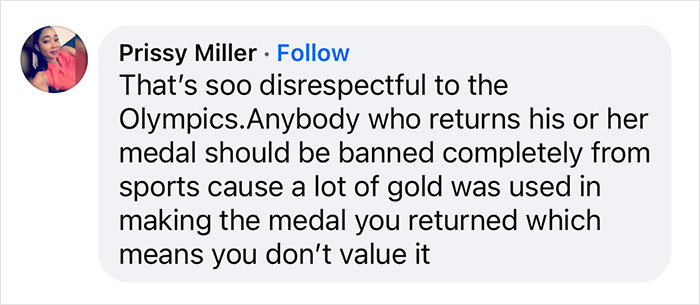Despite the hard work and dedication it took to earn their Olympic medals, over 100 frustrated athletes have decided to return them after signs of deterioration appeared.
One of the first to complain about the quality of the medals was Team USA skateboarder Nyjah Huston, who said his bronze medal looked like it had “gone to war and back.”
- Over 100 athletes have returned their Paris Olympic and Paralympic medals due to poor quality.
- The defects are believed to stem from a new material used after a ban on a toxic varnish component.
- The International Olympic Committee (IOC) and the Monnaie de Paris will replace defective medals.
“These Olympic medals look great when they’re brand-new, but after letting it sit on my skin with some sweat for a little bit and letting my friends wear it over the weekend, they’re apparently not as high quality as you’d think,” he shared along with a photo of the chipped medal.
More than 100 athletes have returned their Olympic and Paralympic medals since the Paris Games
Image credits: Alex Broadway/Getty Images
On the last day of the Olympics, Danish badminton player Viktor Axelsen compared the two gold medals he won at the 2021 Tokyo Summer Olympics and the 2024 Paris Games, leading to comments that the recent one looked “cheap.”
According to a report published on Monday (January 13) by the French newspaper La Lettre, over a hundred disgruntled athletes have returned their defective medals after being dissatisfied with their quality in just four months.
The Monnaie de Paris (the Paris Mint), the public institution that produced the medals for last year’s games, has dismissed its three production and quality directors amid the scandal, according to the outlet. The institution denied these allegations in an email to Bored Panda.
Image credits: Pascal Le Segretain/Getty Images
The low-quality varnishes were the result of a ban on a toxic component of the previously used varnish, chromium trioxide, which had to be replaced at short notice, as per La Lettre.
Before the incident with the Olympic and Paralympic medals, the Monnaie de Paris reportedly struggled with its defective varnishes when tech giant Huawei ordered work medals for its employees.
In October 2023, the Chinese company returned more than 12,000 worn-out medals after noting the appearance of cracks resulting from the new varnishes that would later be used to coat the Olympic medals.
Team USA skateboarder Nyjah Huston said his bronze medal wasn’t of “high quality,” as it began to chip after wearing it for some time
Image credits: nyjah
Image credits: nyjah
Among the athletes who expressed frustration over the state of their medals was also British diver Yasmin Harper, who said her Olympic bronze was showing signs of “tarnishing.”
“There’s been some small bits of tarnishing,” she said in August 2024. “I think it’s water or anything that gets under metal; it’s making it go a little bit discolored, but I’m not sure.”
Similarly, Team France swimmers Clément Secchi and Yohann Ndoye Brouard, who won bronze when competing in the 4×100-metre medley relay, published photos of their damaged prizes.
Secchi described his medal as having “crocodile skin” due to the visible cracks in the varnish. Meanwhile, Ndoye Brouard captioned the image with a crying emoji and said his medal looked like it had been won in 1924.
French swimmer Yohann Ndoye Brouard said his medal looked like it was from 1924, while teammate Clément Secchi posted that his medal had “crocodile skin”
Image credits: yoyo.2911
Image credits: yohann_2911
Image credits: clem_secchi
Brazilian gymnast Rebeca Andrade, who was in one of the most iconic photos from the Olympics after winning gold in the floor final, admitted that she avoids wearing her medals for fear of scratching them.
The Paris 2024 medals were designed by luxury jewelry firm Chaumet. Each includes a piece of iron taken from the Eiffel Tower during different repairs that have been made since it was finished in 1889.
Olympic gold medals are required to be made from at least 92.5% silver and must contain a minimum of six grams of gold, often as a coating, as per the BBC.
Silver medals are made of pure silver, while bronze medals consist of about 95% copper and 5% zinc.
The International Olympic Committee (IOC) stated that defective medals would all be replaced “in the coming weeks.”
Danish badminton player Viktor Axelsen compared the two gold medals he won at the 2021 Tokyo Summer Olympics and the 2024 Paris Games
Image credits: viktoraxelsen
ADVERTISEMENT
“The Organising Committee of the Olympic Games Paris 2024 is working closely with the Monnaie de Paris, the institution tasked with the production and quality control of the medals, in order to appraise any issues with medals to understand the circumstances and cause of any damage,” the IOC told Bored Panda on Tuesday (January 14).
“Damaged medals will be systematically replaced by the Monnaie de Paris and engraved in an identical way to the originals.
“The process to provide any replacements should start in the coming weeks in a process managed by Paris 2024 and Monnaie de Paris, together with the National Olympic Committees of the athletes concerned. Paris 2024 is in contact with the relevant National Olympic Committees.”
All damaged medals will be replaced in the coming weeks
The Monnaie de Paris took the issue of damaged medals “very seriously” from the first exchange requests in August, mobilizing its internal teams, a spokesperson for the public institution told Bored Panda.
They added that the institution has “modified the varnish and optimized its manufacturing process to make it more resistant to certain uses observed among athletes.”
“All damaged medals will be replaced and engraved identically at the athletes’ request during the first quarter of 2025,” the spokesperson stated.
“So they have a return policy,” a reader quipped
Thanks! Check out the results:
Newsletter
Subscribe to Access
Exclusive Polls
By entering your email and clicking Subscribe, you’re agreeing to let us send you customized marketing messages about us and our advertising partners. You are also agreeing to our Privacy Policy.
Thank you! You’ve successfully subscribed to newsletters!


